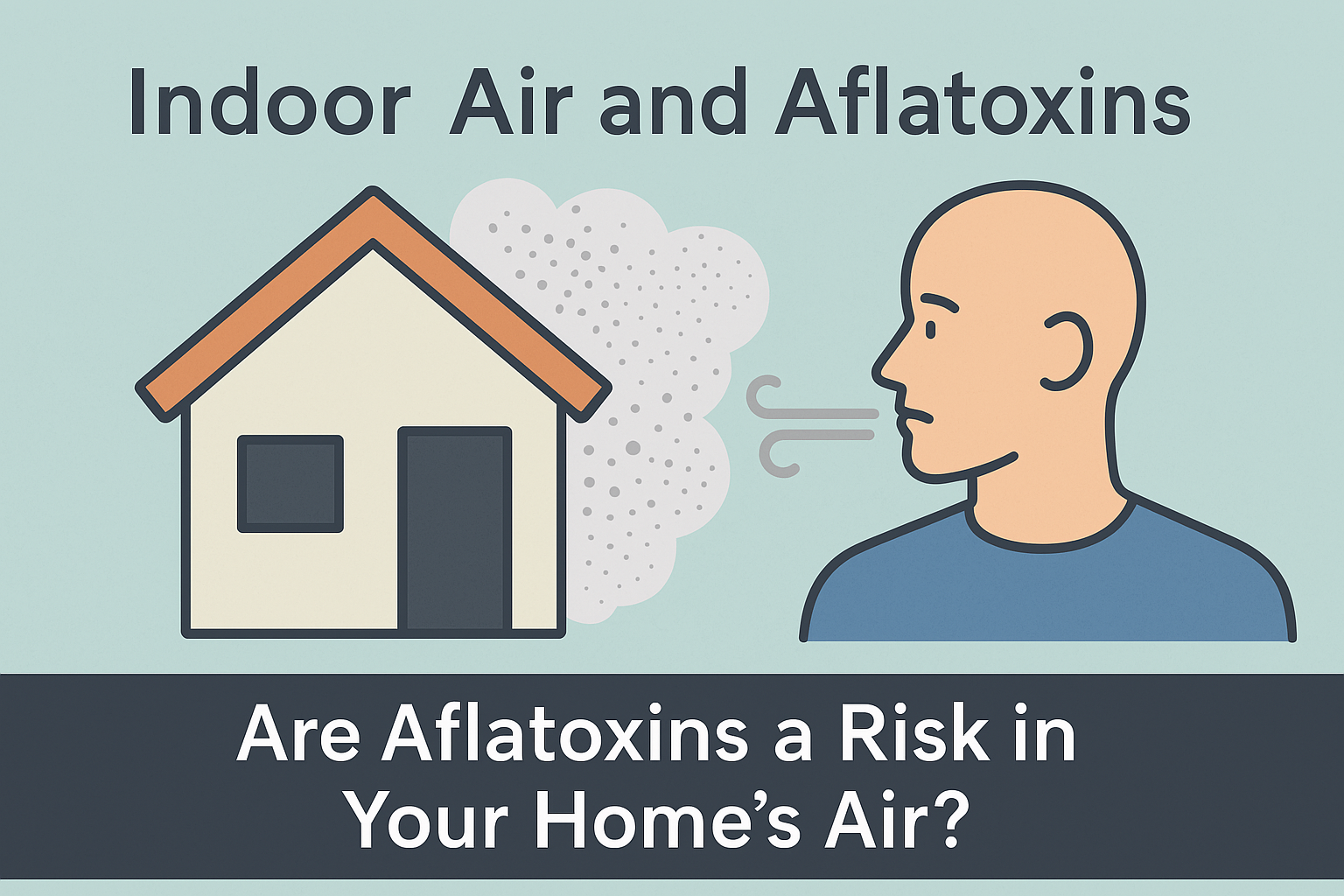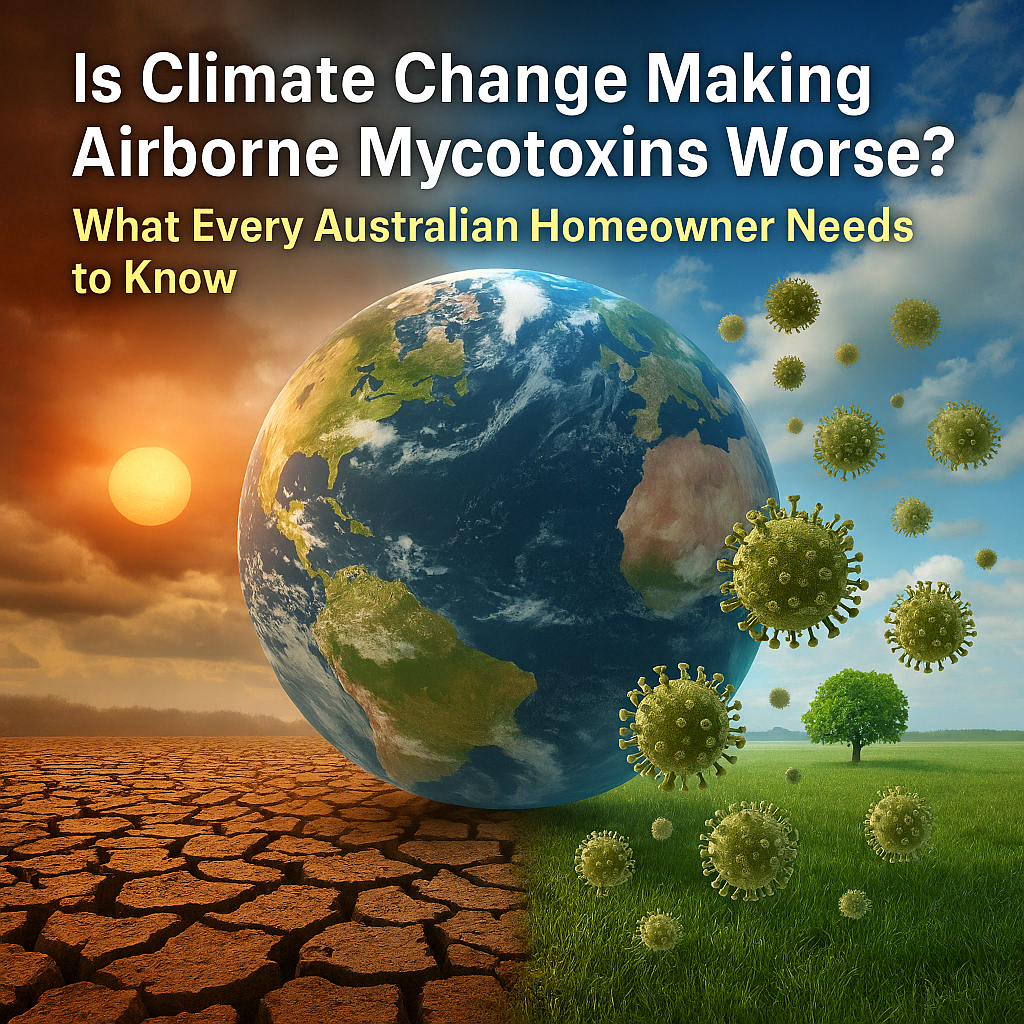
Are Aflatoxins in Agriculture and Industry Putting Your Workplace at Risk?
Mould is a fungus that thrives in damp, poorly ventilated environments—such as cool rooms, food storage areas, and agricultural facilities. While many people associate mould with property damage or minor allergies, its toxic by-products—called mycotoxins—can be far more dangerous.
One such group, aflatoxins, are especially concerning in workplaces like farms, factories, and food handling environments. When disturbed, mould can release these toxins into the air, leading to serious health consequences. Identifying and addressing contamination is essential.
The Mould Group are experts in detecting and safely removing workplace mould and airborne toxins across Brisbane and surrounding areas.
What Are Aflatoxins in Agriculture and Industry and Why Are They Dangerous?
Aflatoxins are toxic compounds naturally produced by moulds such as Aspergillus flavus and Aspergillus parasiticus. These moulds thrive on stored grains, nuts, and organic matter exposed to moisture—making farms and storage facilities especially vulnerable.
When these toxins become airborne—during harvesting, packaging, or cleaning—they pose inhalation risks for workers and nearby residents. Aflatoxins can also contaminate surfaces and equipment, adding to long-term exposure concerns in industrial settings.
How Can Workplace Aflatoxin Exposure Affect Your Health?
Breathing in aflatoxins at work can have serious health consequences. Short-term effects may include coughing, wheezing, eye irritation, and skin reactions. For those with allergies or respiratory conditions, symptoms can escalate quickly.
Prolonged exposure can lead to severe outcomes, such as liver damage, immunosuppression, or even increased cancer risk. Occupational safety should prioritise detecting and reducing aflatoxin exposure to protect worker health.
What Conditions Cause Aflatoxins to Become Airborne?
In workplaces, aflatoxins become airborne when contaminated crops, grains, or organic materials are disturbed. This happens commonly during loading, sorting, cleaning, or moving of goods.
High humidity, poor ventilation, and inadequate storage practices accelerate mould growth. Once mould is present, any physical disturbance—such as sweeping or renovations—can release harmful spores and toxins into the air.
How Can You Test for Aflatoxins in a Workplace Environment?
Testing for workplace aflatoxins involves air sampling and surface swab analysis. Industrial hygienists and mould specialists collect samples and send them to a laboratory for precise identification and toxin level measurements.
The Mould Group uses advanced testing methods to determine the presence of aflatoxins in air, dust, and on work surfaces. Accurate detection ensures targeted remediation, avoiding unnecessary disruption to business operations.
What Are the Best Ways to Remove Aflatoxins from Workspaces?
Effective aflatoxin removal starts with safe mould remediation. This means isolating affected zones, using negative air pressure systems, and cleaning contaminated surfaces with HEPA-filter vacuums and antimicrobial solutions.
Professionals must also fix underlying issues such as leaks, poor drainage, or faulty ventilation. Post-remediation testing confirms that air quality has returned to safe levels.
How Can You Prevent Aflatoxin Contamination in the Workplace?
Prevention focuses on moisture control and proactive inspection. Keep work areas dry, ventilated, and regularly maintained. Ensure that storage practices keep grains, nuts, and organic matter in dry, sealed environments.
Install dehumidifiers in problem zones. Schedule regular inspections, particularly in older facilities or those with a history of water damage. Prevention is the most cost-effective way to manage workplace aflatoxin risks.
Who Is Most at Risk from Occupational Aflatoxin Exposure?
Certain roles are more vulnerable to exposure due to proximity and frequency of contact. These include:
Agricultural workers handling crops or livestock feed
Warehouse staff in grain storage or food packaging
Cleaners and maintenance crews disturbing hidden mould
Renovators working in older buildings or cool rooms
Individuals with asthma, allergies, or weakened immune systems are particularly at risk. For them, even low-level exposure can result in chronic health issues.
If you suspect aflatoxins in your workplace, don’t wait. Contact The Mould Group today for expert testing and remediation.
📝 Next blog in this series:
How to Detect Aflatoxins in Air: Sampling and Testing Methods
📘 Stay informed—follow The Mould Group on Facebook for updates and expert advice.
Recent Post
Emerging Research
Are Airborne Aflatoxins More Dangerous Than We Thought? Emerging Research Reveals the Unknowns Introduction Mould is not just a cosmetic nuisance. It’s a living organism that, when left unchecked, releases toxic by-products into your environment. One of the most concerning of these by-products is aflatoxin—a dangerous type of airborne mycotoxin. While we know that ingesting […]
Climate Change and Airborne Mycotoxins
Is Climate Change Making Airborne Mycotoxins Worse? What Every Australian Homeowner Needs to Know Introduction Mould is more than just an unsightly problem—it’s a biological hazard that can compromise your health and damage your property. As it grows, it can release dangerous toxins into the air called mycotoxins. When these mycotoxins become airborne, they can […]
Airborne Aflatoxins and Animals
Are Your Pets or Livestock at Risk? Understanding Airborne Aflatoxins and Animals Introduction Mould is not just a concern for homes and people—it also poses a serious threat to animals. When mould spreads in barns, sheds, feed storage areas, or even inside homes, it can release aflatoxins—a dangerous type of airborne mycotoxin. These toxins can […]




